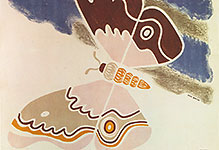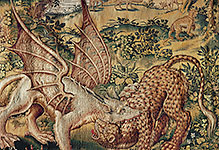
#03010126
Stele of the Serpent King, around 3000 BCE, 1st dynasty, Thinite pe...

#03010140
Apotropaic wand, acting to ward off the dangers of childbirth and early infancy...

#03010149
Fowling in the marshes; fragment of a wallpainting from the tomb of Nebamun,The...

#03010150
Counting the geese: mural from the tomb of Nebamun,from Thebes, 18th dynasty, a...

#03010155
Head of the cow Hathor, 18th dynasty, around 1450 BCE.The cult statue of Hathor...

#03010156
Fragment of the beard of the Great Spinx (New Kingdom, 14th BCE?). Part of the...

#03010212
Mummy of a cat, from Abydos, Upper Egypt Roman period, perhaps 1st century. Ani...

#03010215
Terracotta figurine of a woman riding on a pig, Hellenistic, Egypt, 1st BCE. It...

#03010216
Bronze oil-lamps with a leaping ibex, from ancient South Arabia, probably 5th-4t...

#03010218
Calcite relief with the head of an oryx, Sabaean, from Yemen, 1st BCE - 1st CE....

#03010220
Sphinx with proto-Sinaitic inscriptions, from Serabit el-Khadim, Sinai, Middle K...

#03010221
Coffin for a mummified cat, Egypt, Roman Period, after 30 BC. This example has a...






